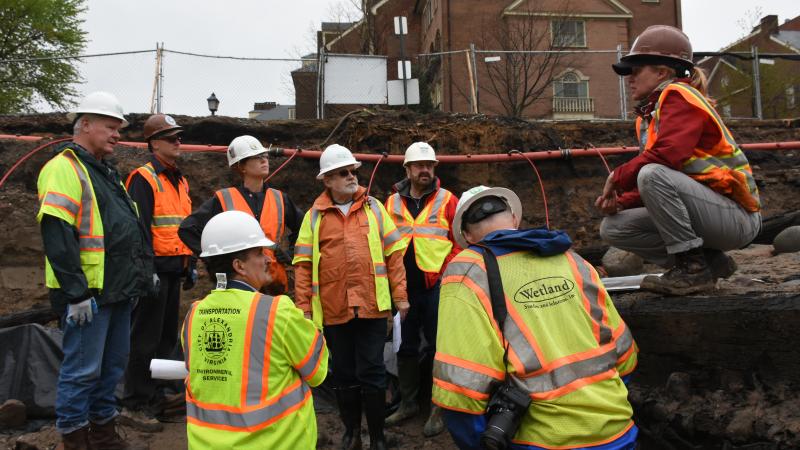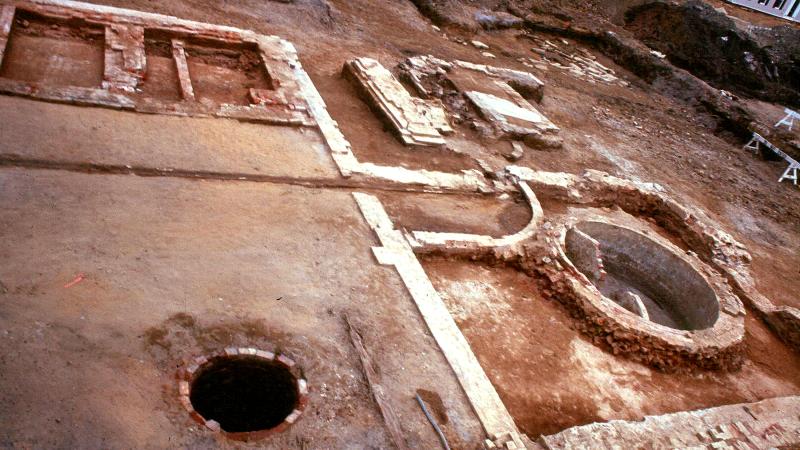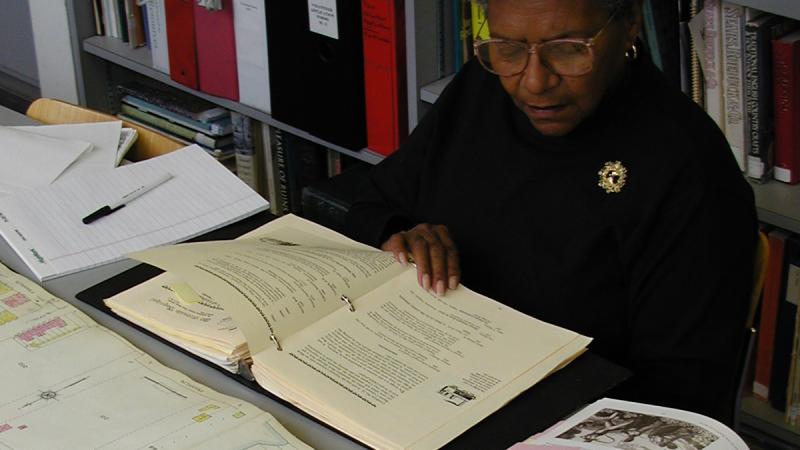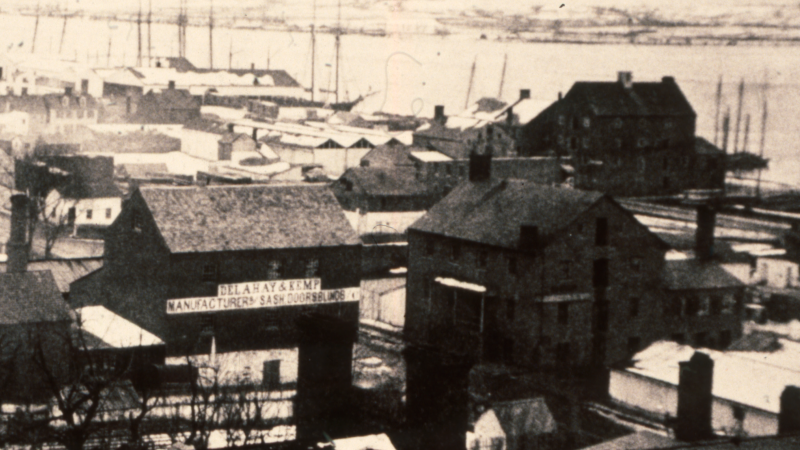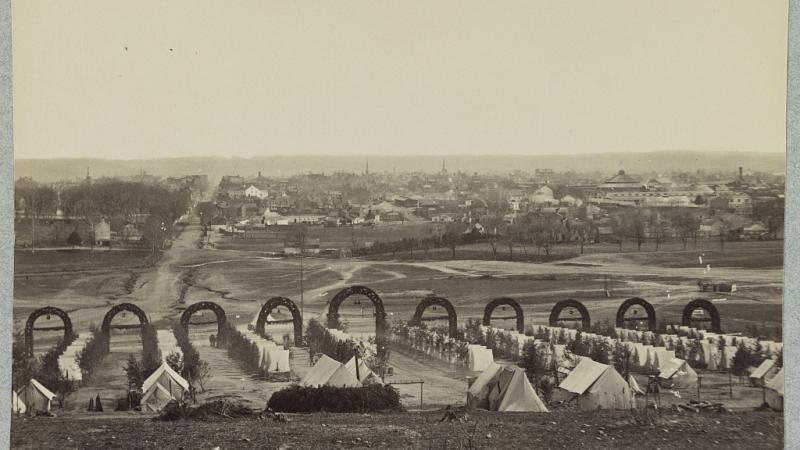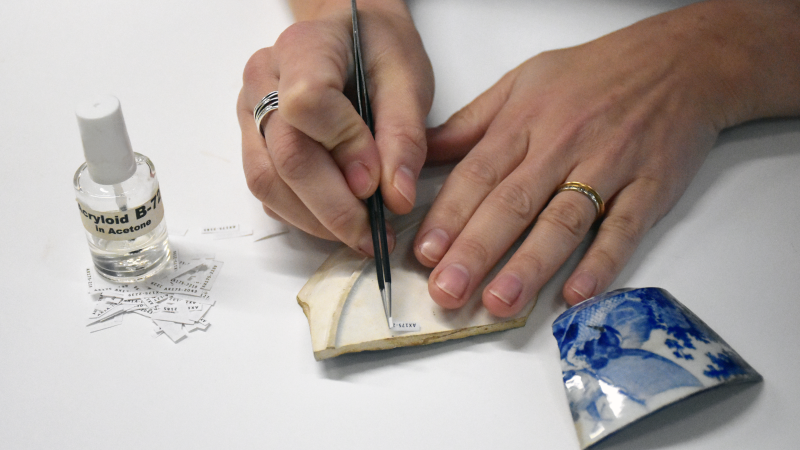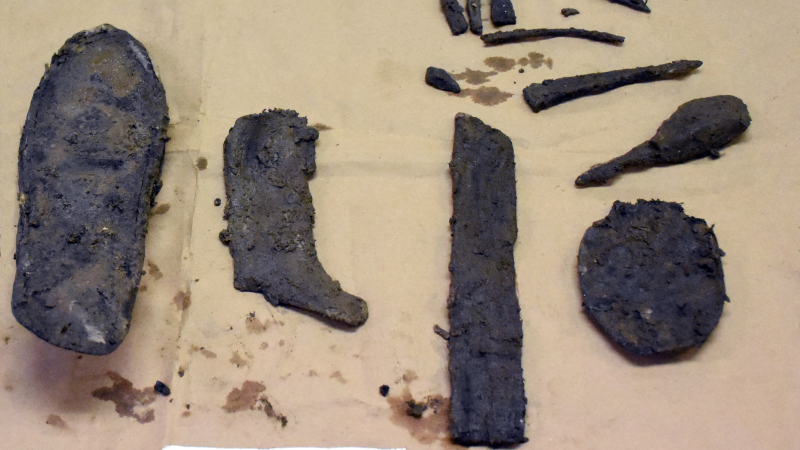A Community Digs its Past
A Community Digs its Past: The Lee Street Site
The updated exhibit includes artifacts and panels that reveal the archaeological process and the history of Alexandria as seen through the lens of the Lee Street Site (archaeological site 44AX180) and several other waterfront sites.
Preserved on the Lee Street Site was a cross-section of Alexandria's history from its founding in 1749 into the 20th century. Eighteenth-century wharves remained intact below remnants of a bakery, taverns, and residences that had sprung up on the bustling waterfront. The block was later used by the Union Army as a hospital support facility for the huge influx of soldiers during the Civil War. These layers of time were preserved under shallow foundations and a paved parking lot. The exhibit weaves together the story of the wharves, taverns, bakery and Civil War privy excavated at the corner of Lee and Queen Streets with the step-by-step process of archaeology from research and excavation to lab work and conservation.
Updates to the panels, funded in part by the Historic Alexandria Foundation, make the exhibit more accessible and tell a more inclusive history of our port city.
Read A Community Digs its Past: The Lee Street Site, an 18-page booklet accompanying the original exhibition.
